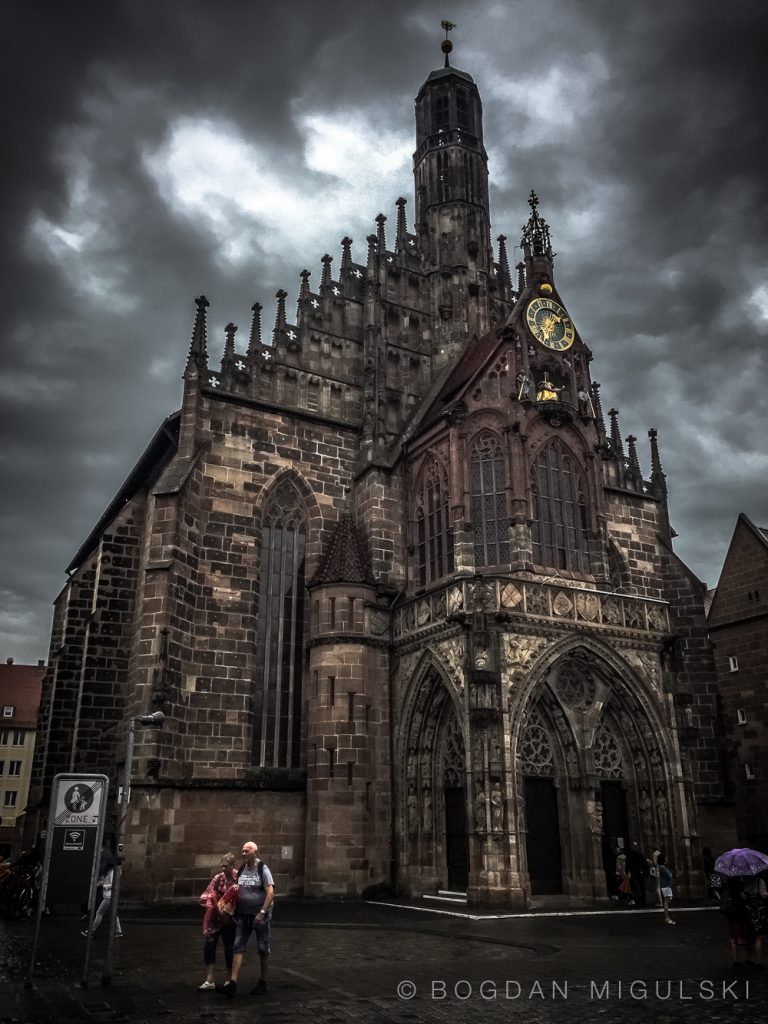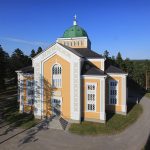
Have you ever wandered through a place so rich in history that every corner seems to whisper stories of the past? If you find yourself in Nuremberg, Germany, the Frauenkirche (Church of Our Lady) will undoubtedly evoke that sensation. This Gothic masterpiece, with its intricate details and storied past, stands as a testament to the architectural prowess and cultural significance of the Middle Ages.
The Beginnings of Frauenkirche
The Frauenkirche is situated in the heart of Nuremberg’s Hauptmarkt (main market square). Its construction began in 1352 under the auspices of Charles IV, Holy Roman Emperor, and it was completed in 1362. The site on which it stands has its own layers of history; it was previously home to a synagogue before being repurposed for the new church. The transition from a synagogue to a church reflects the shifting cultural and religious dynamics of medieval Europe.
Architectural Marvel
The Frauenkirche is a prime example of Brick Gothic architecture, a style prevalent in Northern Europe. As you approach the church, the first thing that captures your attention is the stunning façade adorned with an ornate astronomical clock. Known as the Männleinlaufen, this clock was installed in 1506 and features a daily procession of figures at noon. This mechanized spectacle depicts the Holy Roman Emperor receiving homage from the Prince-electors, a nod to the church’s imperial patronage.
The church’s façade is a marvel in itself. It is richly decorated with statues and carvings that illustrate biblical scenes and saints. The main entrance is adorned with a striking rose window, a feature typical of Gothic architecture. Above the entrance, you can find a series of sculptures including the Madonna and Child, adding to the church’s religious symbolism.
Stepping inside the Frauenkirche is like entering a different era. The interior is equally captivating, with its high vaulted ceilings and expansive nave. The church houses several significant artworks, including the Tucher Altar, a masterpiece of late Gothic art created by the renowned painter and woodcarver Veit Stoss. The altar, with its detailed carvings and vibrant colors, serves as a focal point of worship and artistic admiration.
Another highlight of the Frauenkirche is its grand organ. The current organ, built in 1988, replaced an earlier instrument destroyed during World War II. This modern organ, with its impressive array of pipes and exquisite sound, is used for both liturgical purposes and concerts, continuing the church’s long-standing tradition of musical excellence.
Historical Significance
The Frauenkirche is not just an architectural gem; it is also a site of immense historical significance. Over the centuries, it has witnessed numerous events that have shaped the course of history.
One of the most notable aspects of the Frauenkirche’s history is its connection to the Holy Roman Empire. Nuremberg was one of the principal cities of the empire, and the Frauenkirche played a central role in imperial ceremonies. The Golden Bull of 1356, a decree issued by Charles IV, established Nuremberg as the site for the first Reichstag (Imperial Diet) after the election of each new emperor. This decree underscored the city’s political importance and, by extension, the prominence of the Frauenkirche.
The Frauenkirche also played a pivotal role during the Reformation. Nuremberg was one of the first cities to embrace Protestantism, and the church transitioned from Catholic to Protestant hands in the 16th century. This period of religious upheaval is reflected in the church’s art and architecture, which bear traces of both Catholic and Protestant influences.
The ravages of World War II left few historical structures in Europe untouched, and the Frauenkirche was no exception. The church sustained significant damage during the Allied bombing raids on Nuremberg in 1945. However, in the spirit of resilience that characterizes so much of European history, the Frauenkirche was meticulously restored in the post-war years. The reconstruction efforts aimed to preserve the church’s original Gothic features while integrating modern elements where necessary.
Cultural Role
Beyond its historical and architectural significance, the Frauenkirche continues to play a vital role in the cultural life of Nuremberg.
One of the most famous events associated with the Frauenkirche is the Christkindlesmarkt, Nuremberg’s renowned Christmas market. Held annually in the Hauptmarkt, the market draws visitors from around the world. The festivities traditionally begin with a prologue delivered from the balcony of the Frauenkirche by the Christkind, a young woman chosen to represent the Christmas angel. This event, steeped in tradition, marks the beginning of the Advent season and transforms the square into a winter wonderland of lights, sounds, and aromas.
The Frauenkirche has a rich musical heritage that continues to this day. It regularly hosts concerts and recitals, featuring both sacred and secular music. The church’s acoustics and grand organ make it an ideal venue for performances, attracting musicians and audiences from far and wide. This musical tradition not only enriches the cultural landscape of Nuremberg but also ensures that the Frauenkirche remains a living, breathing part of the community.
The Frauenkirche Today
Today, the Frauenkirche stands as a symbol of Nuremberg’s enduring legacy. It is a place where history, art, and faith converge, offering visitors a unique glimpse into the past while continuing to serve as a vibrant center of worship and culture.
For those planning a visit, the Frauenkirche is open to the public and offers a range of experiences. Guided tours provide insights into the church’s history, architecture, and art. For those seeking a more spiritual experience, attending a service or concert can be a deeply moving way to connect with the church’s enduring legacy.
Maintaining a historic structure like the Frauenkirche requires ongoing preservation efforts. The church is actively involved in conservation projects to ensure that its architectural integrity and artistic treasures are preserved for future generations. These efforts include everything from routine maintenance to more extensive restoration work, all aimed at safeguarding the church’s rich heritage.
Conclusion
The Frauenkirche in Nuremberg is more than just a church; it is a beacon of history, art, and culture. Its Gothic architecture, historical significance, and vibrant cultural role make it a must-visit for anyone interested in exploring the rich tapestry of European history. As you walk through its hallowed halls, you can almost hear the echoes of the past mingling with the sounds of the present, a reminder of the enduring legacy of this magnificent Gothic masterpiece.
Whether you’re an art enthusiast, a history buff, or simply a curious traveler, the Frauenkirche offers a profound and enriching experience. So next time you find yourself in Nuremberg, take a moment to step inside this historic church and let its beauty and history wash over you. It’s an experience you won’t soon forget.




